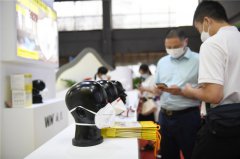Beyond the pandemic: London's Tube battles to stay on track
Even as many of its famous institutions closed during the coronavirus pandemic for most of the past 12 months, London's Underground kept running through three successive lockdowns
March 24, 2021, 7:21 AM
6 min read
A bird flies above an Underground sign at one of the entrances to King's Cross tube station in London, Friday, March 12, 2021. Even as many of its famous institutions closed during the coronavirus pandemic for most of the past 12 months, London's Underground kept running through three successive lockdowns. Nicknamed the Tube, its staff from cleaners to train drivers take pride in maintaining a system that keeps London's heart beating. (AP Photo/Alastair Grant)
LONDON -- When London came to a stop as a nationwide coronavirus lockdown was imposed a year ago, the Underground kept running as an essential service. But it was a strange and unnerving experience for its workers.
Joseph Cocks, a driver on the subway’s Circle Line that loops around the city center, said he could “count the number of people who got on the train on one hand.”
“To see it on a Monday morning peak, to see hardly anyone about, was shocking and surprising,” he said of the system that opened in 1863 and is known colloquially as the Tube.
Its continued operation was a sign that even in a pandemic, London's heart was still beating.
—-
Plagues, fires, war — London has survived them all. But it has never had a year like this. The coronavirus has killed more than 15,000 Londoners and shaken the foundations of one of the world’s great cities. As a fast-moving mass vaccination campaign holds the promise of reopening, The Associated Press looks at the pandemic’s impact on London’s people and institutions and asks what the future might hold.
—-
In a city where almost half of households don’t own a car, public transit keeps economic and social life moving. Before the nationwide lockdown on March 23, 2020, about 5 million journeys a day were taken on the Tube. Its iconic map, reminiscent of a multicolored circuit board, is both an emblem of the city and an essential tool for residents and visitors alike.
In the early weeks, when most Britons were told to stay at home and fear outpaced facts about the virus, Underground employees kept going to work, but worried about getting sick.
“We didn’t know exactly how bad it was,” Cocks said. “There were worries about how dangerous this job was, and you’d hear stories of people on the Underground catching coronavirus. So we didn’t know how fast it spread and how safe we were.”
COVID-19 has taken a heavy toll on Transport for London, which runs the city’s subway, suburban rail and bus network. At least 89 TFL staff have died from the coronavirus, most of them bus drivers, whose death rate has been three times the national average, according to a study by University College London.
The virus has hit people in public-facing jobs hardest, and the death toll has been higher among ethnic minorities than their white compatriots. The reasons are thought to include jobs, underlying health conditions and economic inequality.
About a third of the TFL workforce belongs to an ethnic minority, in part a legacy of the thousands of people from Britain’s former colonies who came to the U.K. after World War II to bolster a depleted workforce.
Brian Woodhead, the Underground’s director of customer services, says the network acted quickly to protect staff and passengers. Masks are mandatory, hand sanitizer is plentiful, escalator handrails are blasted with virus-killing ultraviolet light and one-way systems reduce logjams in station corridors. On buses, drivers sit in sealed-off cabs.
“As much as anyone can in the circumstances that we now find ourselves in, I think that the Tube is a safe environment,” Woodhead said.
He cites a recent study by Imperial College London, which tested for the virus on surfaces and in the air on the Underground and found none. That is due in part to people like Ivelina Dimitrova, who supervises 20 cleaners at stations including the busy King’s Cross. She and her crew — mostly immigrants from Eastern Europe, Africa and south Asia — regularly spray surfaces with hospital-grade disinfectant.
“We had to change our work routine and everything, and (had) to do it fast” when the virus arrived, she said, adding that they felt constant stress about getting infected.
Now, she said, “we have strong morale, because we feel that we have to do what we can do just to keep ourselves safe, our families safe, other people around us safe.”
Passengers who previously took little notice of the cleaning staff now sometimes stop to thank them, she said.








